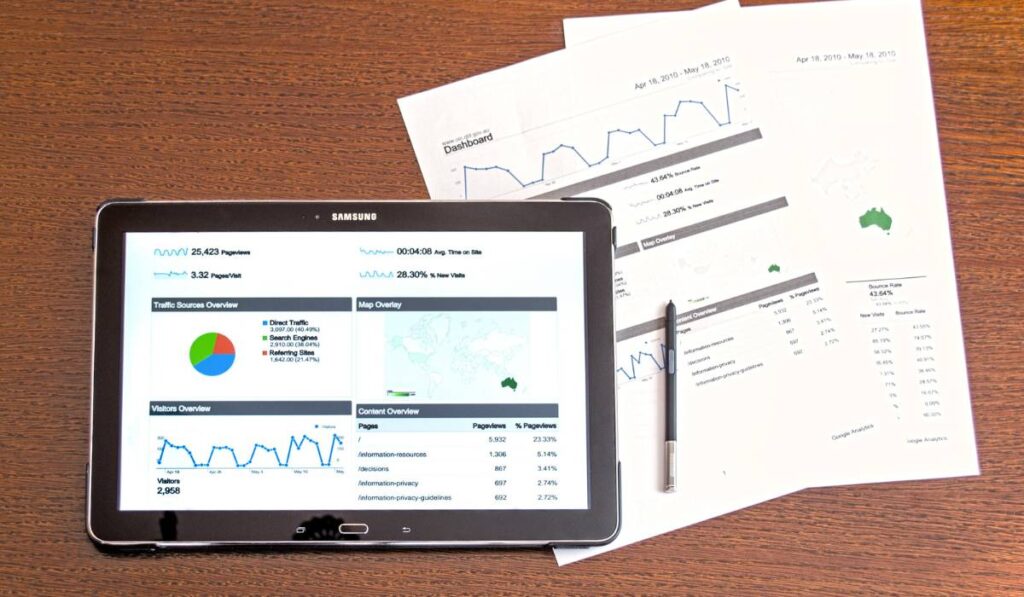Are you looking to maximise your online presence and drive targeted traffic to your website? If so, Google AdWords is an essential tool that can help you achieve your goals. In this article, we will explore the ins and outs of Mastering Google AdWords and provide you with valuable insights to master this powerful advertising platform.
Introduction to Google AdWords
Google AdWords is an online advertising platform developed by Google that allows businesses to display their advertisements on Google’s search engine results pages (SERPs) and partner websites. It operates on a pay-per-click (PPC) model, meaning advertisers only pay when someone clicks on their ads.
Benefits of Using Google AdWords
- Instant visibility: With Google AdWords, your ads can appear on the top of search engine results pages, instantly increasing your visibility.
- Targeted reach: AdWords enables you to reach a specific audience based on their search queries, location, demographics, and interests.
- Cost-effective: You have full control over your budget and only pay when someone clicks on your ad.
- Measurable results: AdWords provides detailed analytics and reporting, allowing you to track the performance of your ads and optimise them for better results.
Getting Started with Mastering Google AdWords
Setting up an AdWords Account
To get started with Google AdWords, follow these steps:
- Go to the Google AdWords website and click on “Start Now.”
- The Google AdWords website can be accessed by typing “Google AdWords” in your preferred search engine or by directly visiting the URL: https://ads.google.com.
- Once you’re on the Google AdWords website, look for the “Start Now” or “Get Started” button prominently displayed on the page.
- Sign in with your Google account or create a new one.
- If you already have a Google account, click on the “Sign in” button and enter your login credentials (email address and password) associated with your Google account.
- If you don’t have a Google account, click on the “Create account” or “Sign up” button and follow the prompts to create a new Google account. You’ll be asked to provide your name and email address and create a password.
- Set up your billing information and select your target audience.
- After signing in, you’ll be prompted to set up your billing information. This involves providing a valid payment method, such as a credit card or linking to your Google Ads billing account.
- Follow the instructions to enter your billing details accurately. Google AdWords provides secure payment processing to ensure the safety of your financial information.
- Once your billing information is set up, you’ll need to define your target audience. This includes specifying the geographic location, language preferences, and demographics of the audience you want to target with your ads.
- Create your first ad campaign by setting your budget, keywords, and ad copy.
- Now that your account is set up, you can create your first ad campaign. A campaign is a set of ad groups, ads, and keywords that work together to reach your advertising goals.
- Start by defining a budget for your campaign. This is the amount you’re willing to spend on your ads per day or month. Google AdWords provides flexibility in setting your budget, allowing you to adjust it as needed.
- Next, choose relevant keywords that are related to your business, products, or services. These keywords determine when your ads will appear in search results.
- Craft compelling ad copy that effectively communicates your message to your target audience. Your ad copy should be clear, concise, and appealing, highlighting the unique selling points of your offerings.
- As you set up your ad campaign, Google AdWords provides a step-by-step process with detailed instructions and options to customise your settings.
Keyword Research
Keyword research is a crucial step in maximising the effectiveness of your AdWords campaigns. Here’s how to conduct effective keyword research:
- Identify relevant keywords: Think about the words or phrases your target audience might use to search for products or services similar to yours.
- Use keyword research tools: Utilize tools like Google Keyword Planner, SEMrush, or Moz’s Keyword Explorer to discover high-volume and low-competition keywords.
- Refine your keyword list: Analyze each keyword’s search volume, competition, and relevance to select the most suitable ones for your campaign.
Creating Compelling Ad Campaigns
Ad Copy and Design
To create compelling ad copy and design, consider the following tips:
- Use attention-grabbing headlines: Craft engaging headlines that instantly capture your audience’s attention.
- Highlight unique selling points: Showcase your products or services’ unique features or benefits to differentiate yourself from competitors.
- Incorporate compelling visuals: Use eye-catching images or videos that resonate with your target audience.
- Write clear and concise copy: Use persuasive language and strong call-to-action to keep your ad copy concise.
Landing Page Optimization
A well-optimized landing page is crucial for converting ad clicks into valuable actions. Follow these best practices:
- Maintain message consistency: Ensure that the content on your landing page aligns with the ad copy and provides a seamless user experience.
- Simplify the conversion process: Make it easy for users to take the desired action by minimising form fields and providing clear instructions.
- Optimise for mobile devices: With the increasing use of mobile devices, ensure your landing page is mobile-friendly and loads quickly.
Monitoring and Optimizing Your Ad Campaigns
Tracking Performance
Regularly monitor the performance of your AdWords campaigns to identify areas for improvement. Here’s how:
- Analyse key metrics: Track metrics such as click-through rate (CTR), conversion rate, cost per click (CPC), and return on ad spend (ROAS).
- Set up conversion tracking: Implement conversion tracking to measure the effectiveness of your campaigns in driving valuable actions.
- Use A/B testing: Experiment with different ad variations to determine which elements perform best and optimise accordingly.
Bid Optimization
Bid optimisation helps you get the most out of your budget and achieve better ad placements. Consider the following strategies:
- Adjust bids based on performance: Increase bids for keywords that generate high-quality traffic and conversions, and decrease bids for underperforming keywords.
- Utilise automated bidding: Use Google’s automated bidding strategies, such as Target CPA or Target ROAS, to optimise your bids automatically.
Conclusion
Mastering Google AdWords requires a combination of strategic planning, continuous optimisation, and a deep understanding of your target audience. By following the tips and strategies outlined in this article, you can take full advantage of Google AdWords and drive significant results for your business.
Ready to take your online advertising to the next level? Try VentCube, the ultimate solution for optimising your Google AdWords campaigns. Contact today and unlock the power of targeted ads, increased visibility, and higher conversions. Supercharge your online presence with VentCube!



